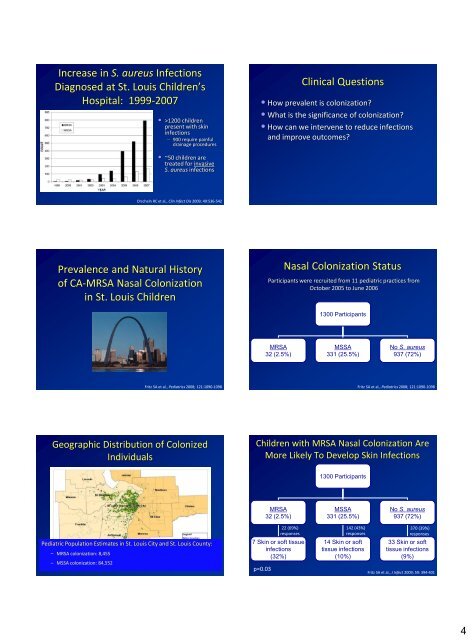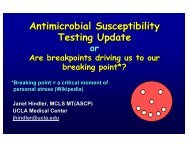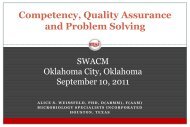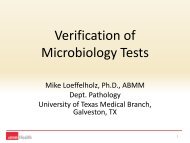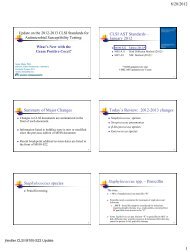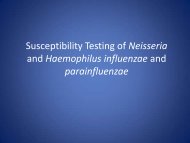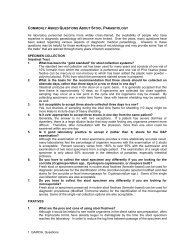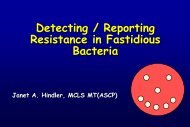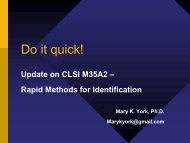Community-Associated Staphylococcus aureus ... - SWACM
Community-Associated Staphylococcus aureus ... - SWACM
Community-Associated Staphylococcus aureus ... - SWACM
Create successful ePaper yourself
Turn your PDF publications into a flip-book with our unique Google optimized e-Paper software.
Increase in S. <strong>aureus</strong> InfectionsDiagnosed at St. Louis Children’sHospital: 1999-2007• >1200 childrenpresent with skininfections– 900 require painfuldrainage proceduresClinical Questions• How prevalent is colonization?• What is the significance of colonization?• How can we intervene to reduce infectionsand improve outcomes?• ~50 children aretreated for invasiveS. <strong>aureus</strong> infectionsOrscheln RC et al., Clin Infect Dis 2009; 49:536-542Prevalence and Natural Historyof CA-MRSA Nasal Colonizationin St. Louis ChildrenNasal Colonization StatusParticipants were recruited from 11 pediatric practices fromOctober 2005 to June 20061300 ParticipantsMRSA32 (2.5%)MSSA331 (25.5%)No S. <strong>aureus</strong>937 (72%)Fritz SA et al., Pediatrics 2008; 121:1090-1098Fritz SA et al., Pediatrics 2008; 121:1090-1098Geographic Distribution of ColonizedIndividualsChildren with MRSA Nasal Colonization AreMore Likely To Develop Skin Infections1300 ParticipantsMRSA32 (2.5%)MSSA331 (25.5%)No S. <strong>aureus</strong>937 (72%)Pediatric Population Estimates in St. Louis City and St. Louis County:– MRSA colonization: 8,455– MSSA colonization: 84,5527 Skin or soft tissueinfections(32%)p=0.0322 (69%)responses142 (43%)responses14 Skin or softtissue infections(10%)370 (39%)responses33 Skin or softtissue infections(9%)Fritz SA et al., J Infect 2009; 59: 394-4014


